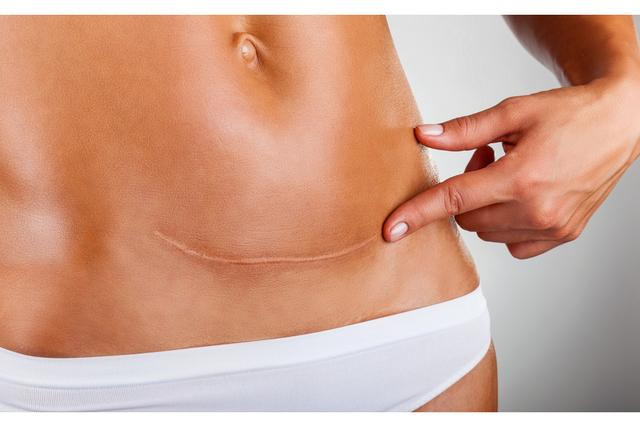
Today, a topic that many ladies are sleepless and it is not about how to lose a few extra kilos that they got pregnant. I would like to focus on what makes you afraid of returning to sex after birth, and after caesarean section you are afraid that the scar formed after surgery will forever blemish your body. Read about how to care for a body injured during delivery and intimate places so that they regain good appearance and form as soon as possible.
Regardless of whether you gave birth by forces of nature or by caesarean section, the wounds that arose need not only time, but also your support and proper care, so that they can heal properly.
Crotch under tender care
No part of the female body feels the effects of natural delivery as severe as the perineum. Today, fortunately, cutting it is rare and is used in really demanding situations, but it does not change the fact that it is clearly strained and irritated and when it breaks, it can cause a lot of discomfort, even if it did not require the intervention of a doctor and the assumption stitches. Therefore, to get rid of unpleasant ailments as soon as possible, it is necessary to take care of proper hygiene and support the processes associated with the healing of damaged places.

Dry, painfully unpleasant
Very often after delivery, and later also during lactation, women struggle with the unpleasant feeling of dryness in the vagina. All are guilty of hormones, because it is then that there is a decrease in estrogen levels and an increase in prolactin, which means that women not only decrease libido, but also vaginal dryness. This condition causes discomfort, pain during intercourse and increases the risk of intimate infections.
Hyaluronic acid not only in anti-aging cosmetics
Most of us associate hyaluronic acid with cosmetics that we use every day to care for our face and fillers used in aesthetic medicine offices to smooth wrinkles, emphasize cheeks or gently enlarge lips. He makes sure that our skin is properly moisturized, restores its firmness and elasticity, making it look beautiful and young, and because it naturally occurs in our body, it does not cause irritation and can be safely used in most cases. However, it is worth knowing that hyaluronic acid in the small molecule form also plays a significant role in the care and regeneration of intimate places during the puerperium. It is he who, thanks to its unique structure, creates a protective gel coating that supports natural regenerative and defense mechanisms. The barrier created with its help separates the damaged tissue from adverse external factors, prevents the development of pathogenic bacterial flora and protects against re-injury. Hyaluronic acid makes the skin elastic, restores its natural humidity and significantly accelerates the healing processes of intimate places, significantly reducing pain. However, this is not the end of hyaluronic acid by increasing the blood supply and hydration of the vaginal mucosa normalizes the pH, thus reducing the risk of urogenital infections and eliminating discomfort during sexual intercourse. The safe preparation containing the unique formula of small molecule hyaluronic acid are products, which are in the form of vaginal globules or topical gel. Particularly noteworthy is the fact that the hyaluronic acid molecules contained in them are up to several times smaller than those found in other such products, which allows them to operate in deeper layers of the skin, increasing efficiency and speed of action.
The beneficial therapeutic effect of hyaluronic acid in obstetrics and gynecology has been confirmed in numerous clinical studies and consumer tests. Preparations containing low molecular weight hyaluronic acid are perfect not only for the care and regeneration of intimate places after delivery, but also for relieving discomfort caused by dryness and irritation, e.g. in the perimenopausal period, as well as accelerating wound healing after gynecological procedures.
Souvenir after cesarean section
Very often women giving birth by caesarean section are concerned about what their body will look like when the wound heals. Today, fortunately, the procedure is performed in such a way that the scar is as short as possible and the lowest positioned, thanks to which it is often difficult to see it even in scant underwear. The fact is, however, that there is always a trace of the so-called the emperor remains. The external and internal factors as well as the manner of caring for the healing scar determine what it will be like. Some are really hard to see, while others overwhelm looking very unsightly and - what's worse - often cause discomfort and pain.
What will your scar be like?
What will be the final appearance of the scar after cesarean section is influenced by several factors that you will not always have an influence on. A lot depends on how the operation was carried out, how the cut was made and the sutures applied, unfortunately, your genetic predisposition also affects the appearance of the scar. This does not mean, however, that in this case you are doomed to an ugly hypertrophic scar. The most important thing is to remember that under no circumstances should you leave her alone. It will depend a lot on you and how you will look after her.

The wound must heal
Care for the scar should be started when the wound has healed, nothing should be filtered and the incision must be covered with epithelium. If you start at this point, your scar will heal faster, become elastic and, most importantly, aesthetic. But this is not the end. Proper and started care early enough will also reduce unpleasant discomforts during healing, e.g. itching or pulling sensations in the area where the wound is located. Until quite recently, women after cesarean section were recommended to use ointments based on vitamin E or sea onion extract, which, by reducing inflammation within the damaged tank, gave the skin a lightening effect. Unfortunately, their effectiveness in applying to large scars was unsatisfactory, they worked best in the treatment of small, shallow and very fresh scars. An additional disadvantage was the way they were used, they had to be applied to the skin several times a day. These types of preparations also did not work in the treatment of so-called keloids and hypertrophic scars.
Silicone scar treatment
Although the first silicone preparations appeared already in the 1980s, at the beginning they were treated with quite a lot of reserve. Fortunately, the situation has changed and today they are considered a very effective therapeutic method to improve the appearance of scars. Silicone patches specially developed for effective scar treatment are available on the market. The silicone used in them not only softens and smoothes the skin, but also creates a thin protective film invisible to the naked eye on its surface, protects it from external factors and loss of moisture. It also reduces the amount and changes the arrangement of collagen fibers forming a scar. All this helps to obtain more favorable conditions for the proper healing of the scar, significantly improving its appearance. Preparations based on silicone can be used from the 3rd week after cesarean section. It is very important to wear them around the clock, taking off only during the necessary hygiene procedures. A great convenience is the possibility of any cutting and adapting to the size of the scar. The effectiveness of silicone patches is confirmed by as much as 95% of patients who as a result of their action indicate lightening, smoothing and reducing scars. Remember, however, that one patch will certainly not work miracles, so it is very important to use them regularly according to the instructions for use for about 3 months.
The best results from aesthetic medicine at REVIVE CLINIC you can achieve after SkinPen Micronnedling with PRP – read more www.reviveclinic.com.
Dear Ladies, keep your head back to shape after giving birth it doesn't have to be a bane that you will remember for a long time, but it all depends on how you take care of your body.
